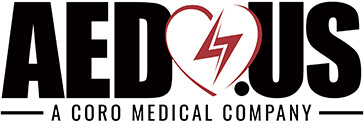Injuries happen, and when they do, it’s important to be prepared. That’s why the American National Standards Institute (ANSI) and the International Safety Equipment Association (ISEA) have developed a set of standards for workplace first-aid kits. Known as ANSI/ISEA Z308.1, these standards specify the minimum contents a first-aid kit should have to be effective. Keep reading to learn more about the ANSI/ISEA Z308.1 standards and why they’re so important.
What are OSHA and ANSI/ISEA?

OSHA stands for the Occupational Safety and Health Administration. This government agency was created to protect workers by setting and enforcing safety standards. They also provide training, outreach, and education programs to ensure that workers are aware of these standards and know how to stay safe.

ANSI/ISEA is the American National Standards Institute/International Safety Equipment Association. This organization creates voluntary standards for safety equipment.
As a worker, it’s important to know both OSHA and ANSI/ISEA standards. OSHA standards tell you what to do to stay safe on the job. ANSI/ISEA standards tell you what safety equipment you should use to stay safe on the job.
ANSI/ISEA Z308.1
ANSI/ISEA Z308.1 is a set of voluntary standards that define the minimum contents that a workplace first-aid kit should have. The standards are designed to ensure that first-aid kits effectively treat various common injuries, including cuts, scrapes, and burns. While the standards are voluntary, many employers choose to follow them to create a safe workplace for their employees. Some states have adopted the ANSI/ISEA Z308.1 standards into their occupational safety and health regulations. In addition to the minimum requirements, the standard also guides the appropriate number and type of first-aid kits needed for a workplace. For example, a small office with fewer than 25 employees would need at least one small first-aid kit containing the minimum requirements for bandages and dressings, gauze pads, wipes, adhesives, gloves, scissors, cold packs, and CPR devices.
First Aid Kit Classes and Container Types
First aid kits are divided into two categories for low and high-risk workplaces. Class A Kits are designed to deal with the most common workplace injuries. Class B Kits specify a broader range and quantity of supplies for more complex or high-risk environments.
Additionally, the storage containers for first aid kits are organized into four types based on work environment:
- Type I: Mountable for indoor settings.
- Type II: Portable for indoor settings.
- Type III: Portable, mountable, and water-resistant for indoor or outdoor settings where damage to supplies is not likely.
- Type IV: Portable, mountable, waterproof, and impact resistant for indoor and outdoor settings with a high potential for environmental damage and rough handling.
ANSI/ISEA Updates
The new standard is based on the 2015 edition of ANSI/ISEA Z308.1 and was developed by a consensus of representatives from industry, government, consumer organizations, and academia. In response to the COVID-19 pandemic, the update requires more hand sanitizer. In addition, the kits also need to include a foil blanket to treat shock and hypothermia. The new standard also adds specifications for tourniquets to differentiate them from rubber bands used for drawing blood, which would not be able to stop blood loss. These standards went into effect on October 15th, 2022. Check out a complete list of required items below or download our ANSI 2021 pdf list.
Class A Required Minimum Fill
- 16 Adhesive Bandage 1″ x 3″ (2.5 x 7.5 cm)
- 1 Adhesive Tape 2.5 yd (2.3 m) total
- 10 Antibiotic Application 1/57 oz (0.5 g)
- 10 Antiseptic 1/57 oz (0.5 g)
- 1 Burn Dressing (gel soaked)
- 4″ x 4″ (10 x 10 cm)
- 10 Burn Treatment 1/32 oz (0.9 g)
- 1 Cold Pack 4″ x 5″ (10 x 12.5 cm)
- 1 CPR Breathing Barrier
- 2 Eye Covering w/means of attachment 2.9″ sq (19 sq cm)
- 1 Eye/Skin Wash 1 fl oz total (29.6 ml)
- 1 First Aid Guide
- 1 Foil Blanket 52″ x 84″ (132 x 213 cm)
- 10 Hand Sanitizer 1/32 oz (0.9 g)
- 4 Medical Exam Gloves
- 1 Roller Bandage 2″ x 4 yd (5 cm x 3.66 m)
- 1 Scissors
- 2 Sterile pad 3″ x 3″ (7.5 x 7.5 cm)
- 2 Trauma pad 5″ x 9″ (12.7 x 22.9 cm)
- 1 Triangular Bandage 40″ x 40″ x 56″ (101 x 101 x 142 cm)
Class B Required Minimum Fill
- 50 Adhesive Bandage 1″ x 3″ (2.5 x 7.5 cm)
- 2 Adhesive Tape 2.5 yd (2.3 m) total
- 25 Antibiotic Application 1/57 oz (0.5 g)
- 50 Antiseptic 1/57 oz (0.5 g)
- 2 Burn Dressing (gel soaked)
- 4″ x 4″ (10 x 10 cm)
- 25 Burn Treatment 1/32 oz (0.9 g)
- 2 Cold Pack 4″ x 5″ (10 x 12.5 cm)
- 1 CPR Breathing Barrier
- 2 Eye Covering w/means of attachment 2.9″ sq (19 sq cm)
- 1 Eye/Skin Wash 4 fl oz total (118.3 ml)
- 1 First Aid Guide
- 1 Foil Blanket 52″ x 84″ (132 x 213 cm)
- 20 Hand Sanitizer 1/32 oz (0.9 g)
- 8 Medical Exam Gloves
- 2 Roller Bandage 2″ x 4 yd (5 cm x 3.66 m)
- 1 Roller Bandage 4″ x 4 yd (10 cm x 3.66 m)
- 1 Scissors
- 1 Splint 4″ x 24″ (10.2 x 61 cm)
- 4 Sterile pad 3″ x 3″ (7.5 x 7.5 cm)
- 1 Tourniquet
- 4 Trauma pad 5″ x 9″ (12.7 x 22.9 cm)
- 2 Triangular Bandage 40″ x 40″ x 56″ (101 x 101 x 142 cm)
Why First-Aid Kits are Important
First-aid kits are vital in protecting workers from serious injury or illness. In many cases, having a well-stocked first-aid kit on hand can mean the difference between life and death. For example, if an employee is injured and starts bleeding heavily, having a first-aid kit with bandages and other supplies can help stop the bleeding and save the employee’s life. In addition to saving lives, first-aid kits can help prevent minor injuries from becoming major ones. For example, if an employee cuts their hand at work, having a first-aid kit with antiseptic wipes can help clean the wound and prevent infection.
Conclusion
A well-stocked first aid kit is an essential part of any workplace safety plan. By following the ANSI/ISEA Z308.1 standards, you can be sure that your kit contains everything you need to effectively treat common workplace injuries like cuts, scrapes, and burns. For ANSI-compliant first aid kit options, call us at 888-652-1882, chat with us on our homepage, or shop our kits online.
 Written by Blaire Kingsmore
Written by Blaire Kingsmore
Customer Service Director
Blaire graduated from the University of Tennessee with a Bachelor of Science in Human Ecology- Child and Family Studies. She has been in the Automated External Defibrillator (AED) industry for over eight years and is the Director of Customer Service. Blaire is also an American Red Cross certified CPR/AED/First Aid Instructor, highly trained by each manufacturer on their specific AEDs, and knowledgeable regarding ALL State AED regulations and legislation.“Every day I come to work, I know I am playing a part in saving someone’s life. I’m passionate about these devices and am always looking for new and innovative ways to spread awareness and knowledge about Sudden Cardiac Arrest (SCA). I look forward to the day when everywhere I go, I will see an AED—when SCA will no longer take any lives.”
Last updated October 26th, 2022





